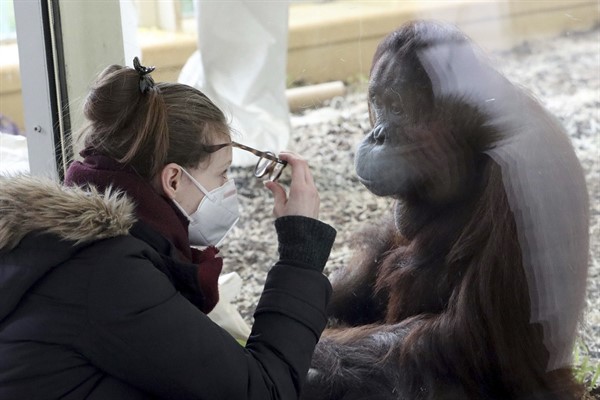It has long been clear that humans are not the only species that contract COVID-19. At least 15 different animal species in U.S. zoos—including hippopotamuses, hyenas and snow leopards—have tested positive for the coronavirus during the course of the pandemic. The disease is running rampant through the white-tailed deer population in the United States’ Upper Midwest region, with more than one-third of deer examined in Ohio showing evidence of recent or active COVID-19 infections. In 2020, the Danish government culled 17 million minks out of fears that coronavirus infections among the animals could lead to outbreaks among humans, causing a major controversy known as “minkgate” over whether the government had the authority to take such an action. Other studies have shown that domestic cats and dogs, and even lions, are also susceptible.
The accumulating evidence that COVID-19 spreads between humans and animals complicates our ability to fight the pandemic and introduces even more uncertainty about how the future may look. It has also revealed critical gaps in global health governance structures that undermine organizations’ ability to meet the challenges posed by new and emerging infectious disease outbreaks like COVID-19.
It is not at all surprising that the coronavirus can spread between humans and animals: Scientists estimate that 60 percent of all infectious diseases, and 75 percent of new and emerging infectious diseases, are zoonotic in origin. Pigs and birds are reservoirs for influenza. Middle East Respiratory Syndrome, or MERS—a coronavirus related to the one that causes COVID-19—is thought to come from camels. And current evidence suggests that bats are the animal host for Ebola. Indeed, the leading theory for COVID-19’s origin is that the virus made its way from bats to humans via another undomesticated animal species sold for human consumption. As people come into closer contact with animals due to the destruction of animal habitats as well as meat-based diets, the likelihood of a disease making the jump from animals to people, and vice versa, increases.

